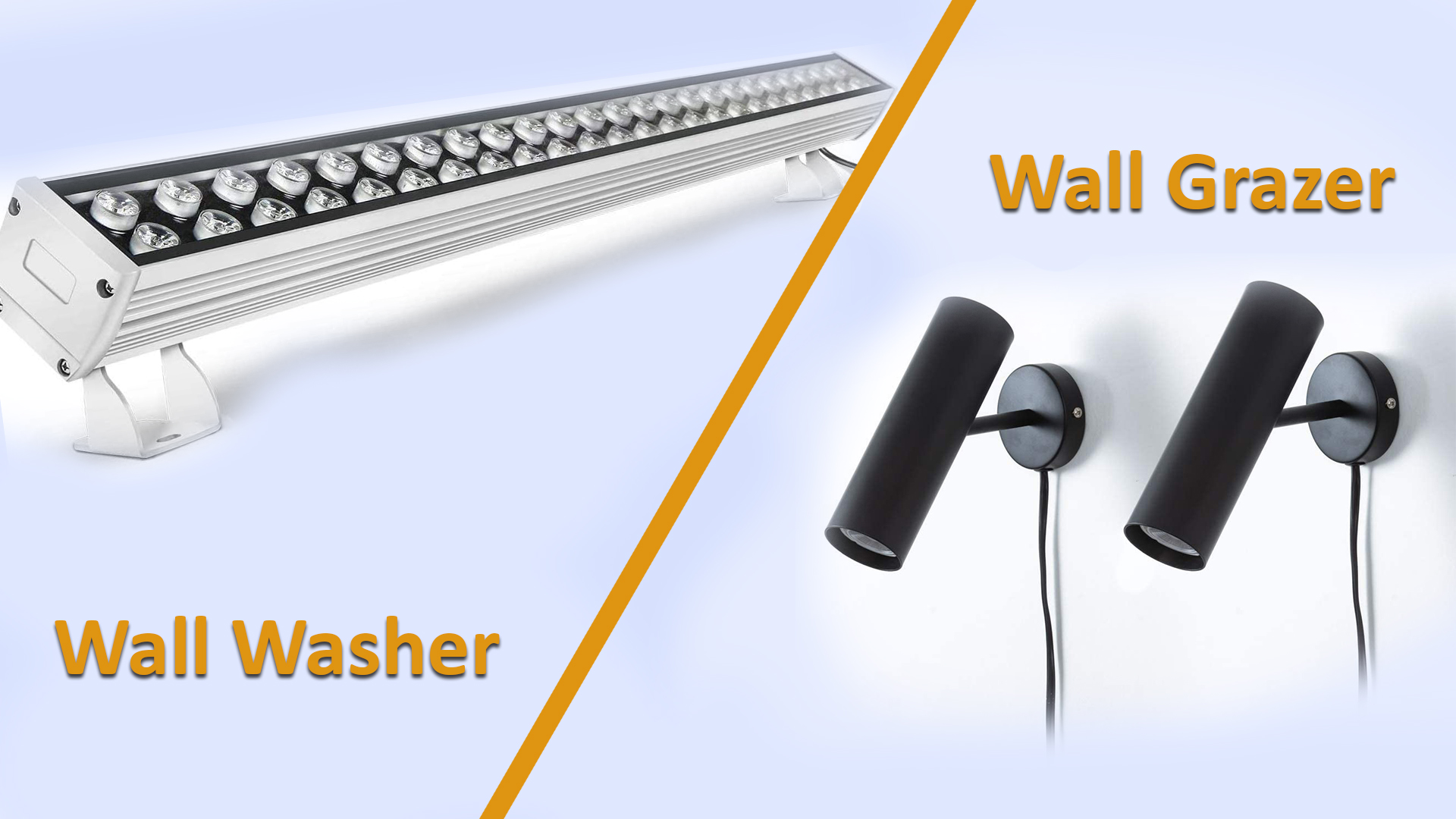
This article gives you an in-depth look into the two lighting styles and their applications to help you identify the best lighting style for your walls.
What is Accent Lighting?
Accent lighting is a style of lighting that uses directional lights to pull focus towards a specific object or area. The goal is to highlight and emphasize objects that would otherwise fade into the background.
Accent lighting a wall means to light it so that the wall itself or elements of the wall are highlighted.
Wall Washers
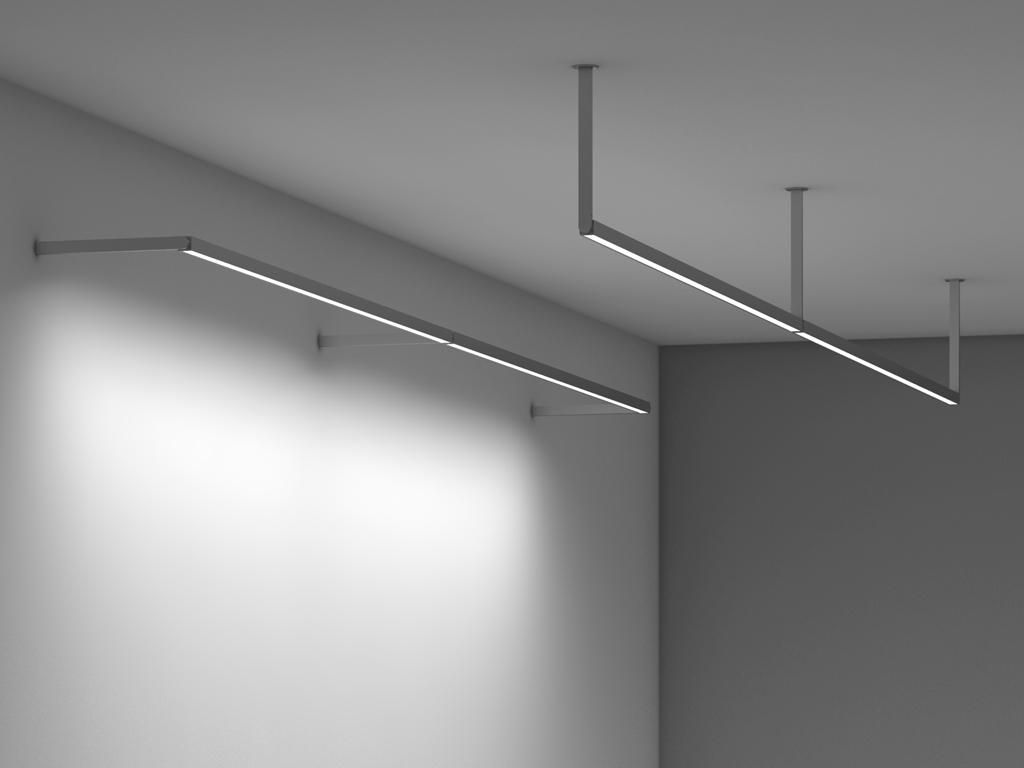
Wall washing is a lighting technique that uses bright accent lights to illuminate a wall surface so that all wall imperfections and shadows are eliminated. The goal is to have consistent. Uniform lighting spread across the wall. The brightness of the light beam will drown out any surface imperfections.
Wall washing lights come in a pleasant and convenient rectangular form factor. You can use several of these units in series to illuminate a larger flat surface. The fixture design of wall washers is generally irrelevant as these units are meant to be recessed or hidden. Most units come with a simple, non-intrusive color scheme to fit your building’s aesthetics.
Installation Requirements for Wall Washers
Wall Washers are installed at or above ceiling height to provide an even wall washing effect. You can optionally install the washers on the floor as well. However, you will lose valuable floor area if you mount the wall washing light. The best application for wall washers is to mount the lights on the ceiling and have a focal point be the floor. This will result in the ground shining with a soft glow.
Here are essential factors to consider when installing wall washers.
- Distance from the wall surface should be greater than 12”.
- Ceiling mounting is generally the best option.
- Taller walls will have a muted wall wash.
The light must hit the wall from a reasonable distance to remove shadows. Check the installation requirements and standards with the light’s manufacturer. If the washer lights are too close, they will turn into wall grazers.
Considerations for Beam Angles
A wider beam angle is necessary for a sound wall washing technique. As the light fixtures are away from the wall, eliminating shadows will require a beam angle of 20° or greater. The lights should be perpendicular to the wall to get the most smooth wall wash. But such placement for light fixtures is impractical.
Ceiling-mounted lights a few feet from the wall will result in a mostly uniformly lit vertical surface. The desired effect is strong enough to become imperceptible to the human eye. Wall wash is the preferred wall lighting method since it removes shadows and makes the space brighter.
Examples of Wall Washers
Exterior Wall Washing
Most commercial buildings will have a professional-looking, sleekly painted outer wall. Wall washing is a quick and easy way to increase the nighttime visibility of such surfaces.
Color Projection
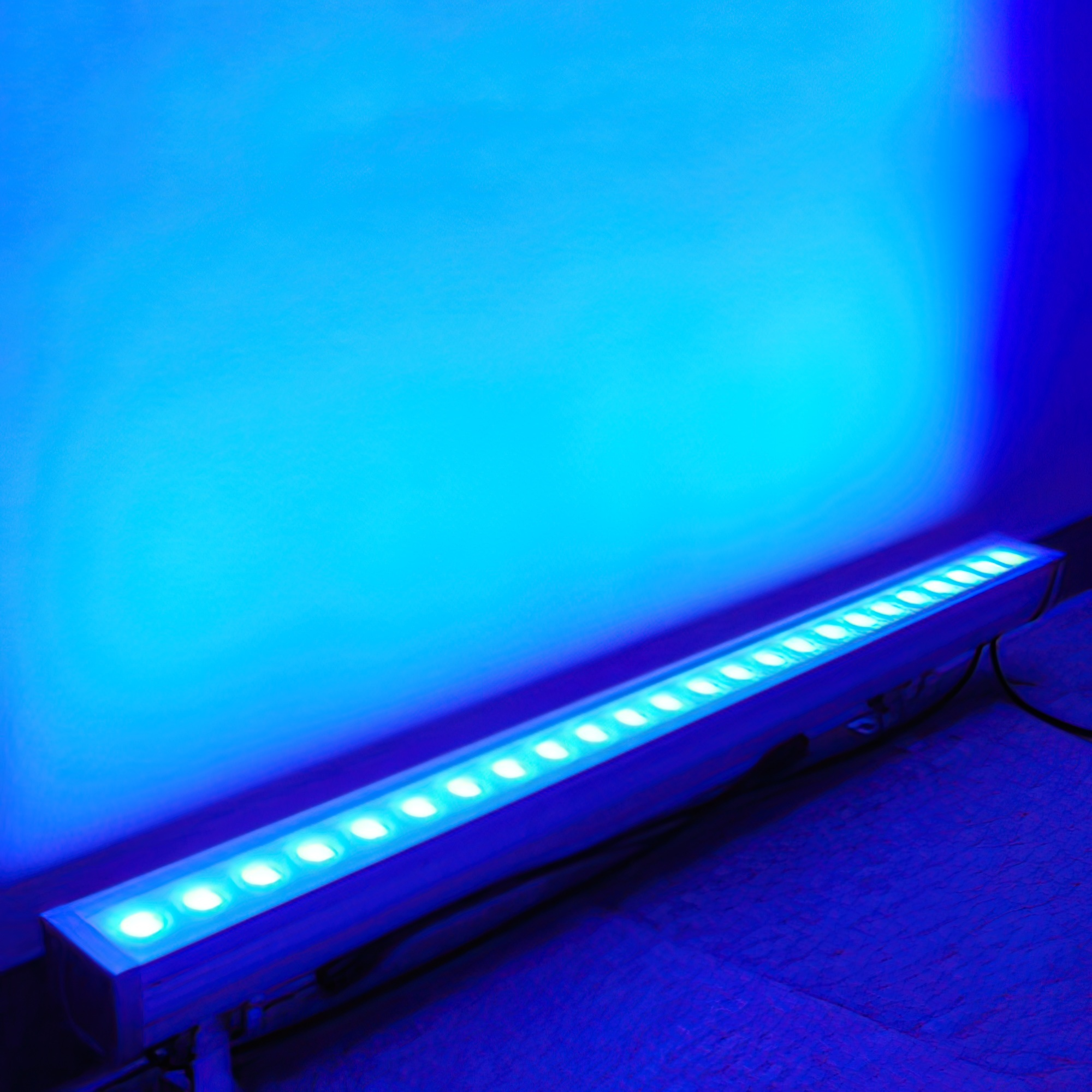
You can use colored or addressable LEDs to add a splash of color to your wall. Paints come in several qualities, but they lack the luminance of LEDs. You can use colored wall washing LEDs as both accent and mood lighting.
Illuminating Art Pieces
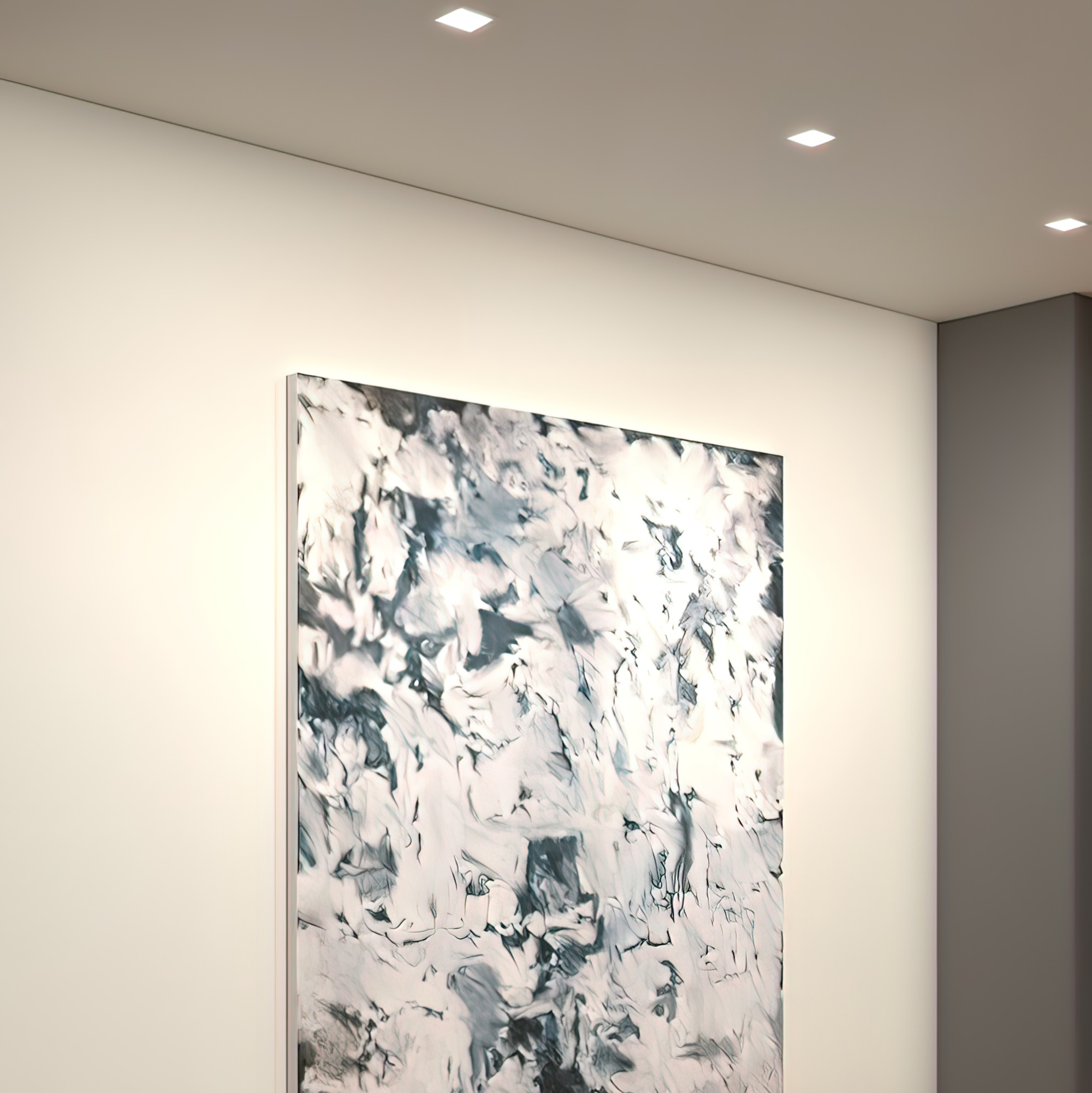
Art is best viewed from the front as the artists first painted it. Poorly lit artworks ruin the ambiance of the entire room. Washers bring a uniform soft luminance to the art piece for the best viewing experience.
Accent Lighting for Plants

Plants are pretty similar to art. They have good viewing angles and bad ones. Wash lighting brings the best out of your plants. It minimizes undesired shadows and illuminates the leaves and stems.
Wall Grazers
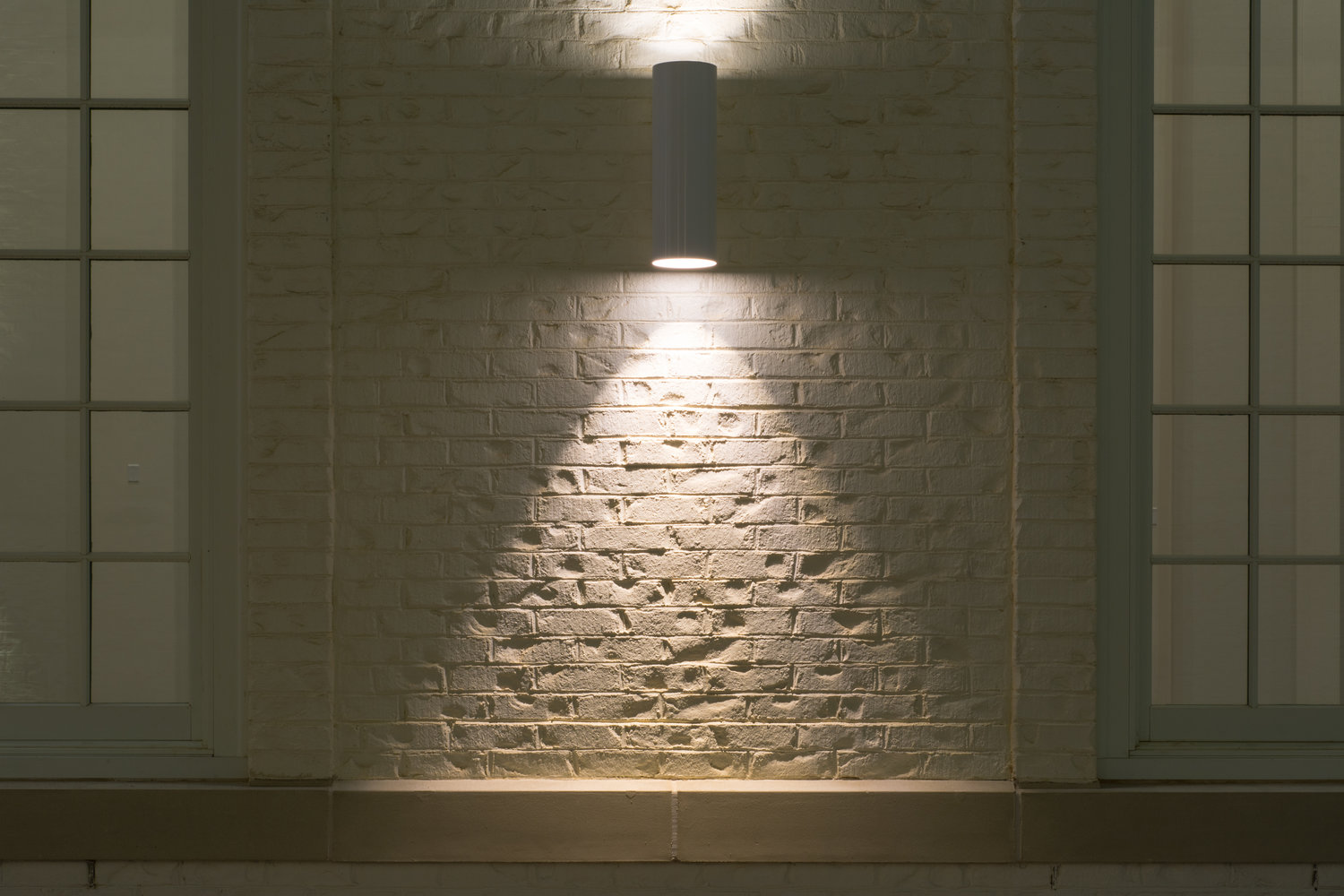
Wall grazing is a lighting technique that highlights textured vertical surfaces using a narrow-angle light. Unlike wall washing, wall grazing is meant to create more dynamic shadows. Wall grazing turns an otherwise ordinary surface into a unique art piece.
Walls are unique structural elements as they serve a practical purpose but also a design one. Graze lighting walls require the lights closer to the surface than its counterpart. A shorter distance between the surface and light will result in more prominent architectural features.
Wall grazing lights can be similar to wall wash lighting, a rectangular boxy fixture. But more importantly, you can also use spotlights or wall sconces to accomplish the same goal.
Wall washing and wall grazing are two very similar lighting methods that result in two very different lighting outcomes.
Installation Requirements for Wall Grazers
Wall grazers can be mounted on the ceiling, the floor, or the wall itself. The only installation requirement for wall grazing is that lighting needs to be located closer to the vertical space.
Here are essential factors to consider when installing wall grazers.
- Distance from the wall should be less than 12”.
- Grazers can be mounted on any surface and in any orientation.
- Tall walls will see minimal luminance drop-off.
The textures on walls can have varying levels of embossing. Some textures might protrude a millimeter or so, while others might be a whole inch from the surface. If a light is too close to the wall, it will have trouble highlighting the more protruding sections. In contrast, if the light is too far away, it will not be able to correctly highlight the smaller textures.
An added benefit of wall grazing comes in its mounting flexibility. Since your goal isn’t to wash the entirety of the vertical surface, you don’t need long rows of lighting mounted on the ceiling. You only need a handful of lighting units that can provide good highlighting. If your wall textures are horizontal, you can mount your lighting units sideways on the wall surface.
Considerations for Beam Angles
Graze lighting requires a much narrower beam angle than wash lighting. A standard wall grazer will have an angle of approximately 5°. The stark angle between the walls and the lights is responsible for those dynamic shadows and highlights.
A wider angle is beneficial for spaces with an exceptionally high ceiling. Alternatively, you can utilize wider angles if your walls have more protruding elements. The best beam angle for your space is the one that brings out the best elements of your wall. Consider beam angles as general recommendations and not hard and fast lighting rules.
Examples of Wall Grazers
Exterior Wall Highlighting

House walls are blank canvases for you to decorate with as you see fit. Whether you have wood panels covering the outside of your house or tiles, graze lighting will help bring out that beautiful texture during nighttime.
Brick Wall Highlighting
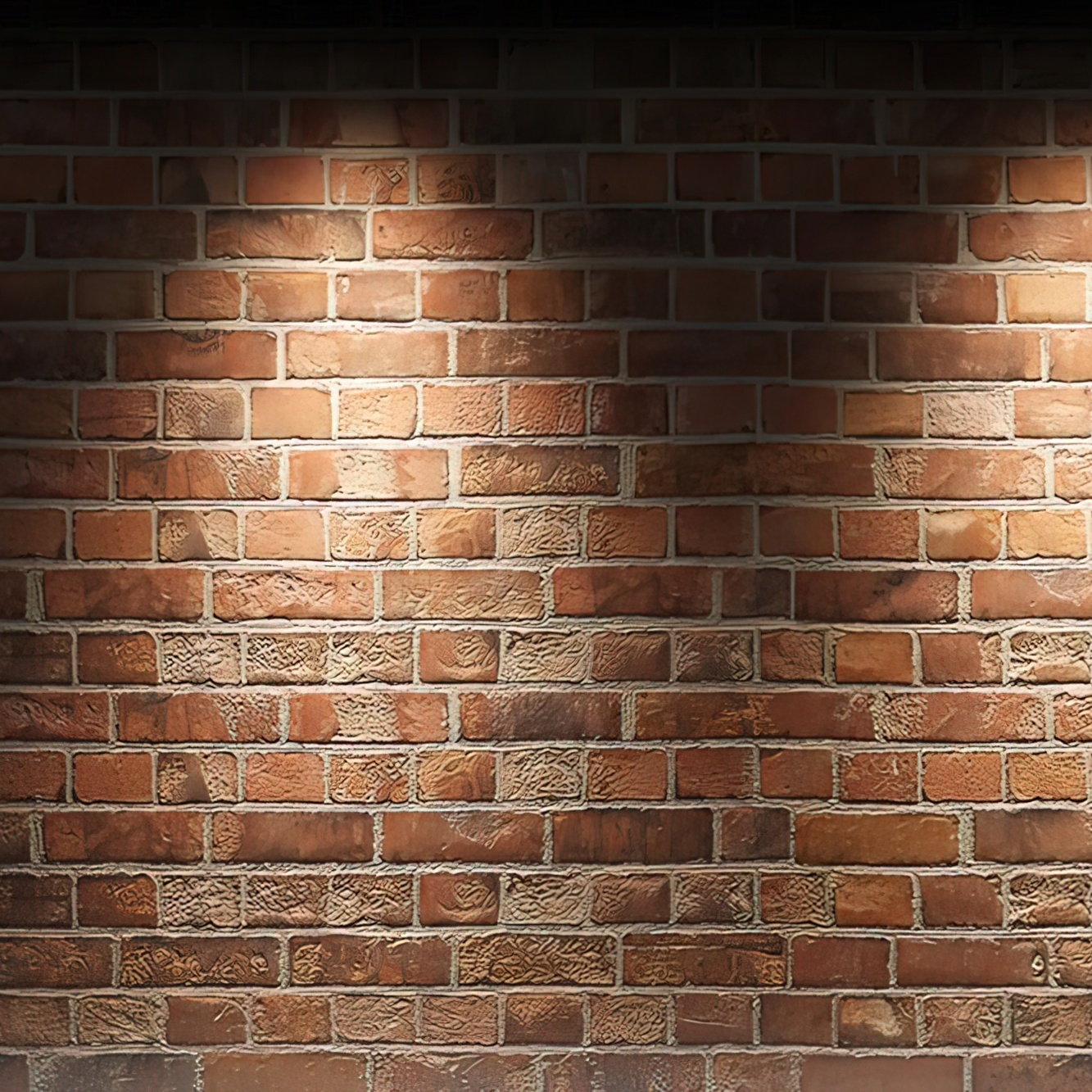
Brick walls have a unique and wonderful texture to them as is. You have the lovely red bricks held together by the gray mortar. Wall grazing enhances the minute surface differences between the bricks and brings a new charm to the space.
Pillars and Columns
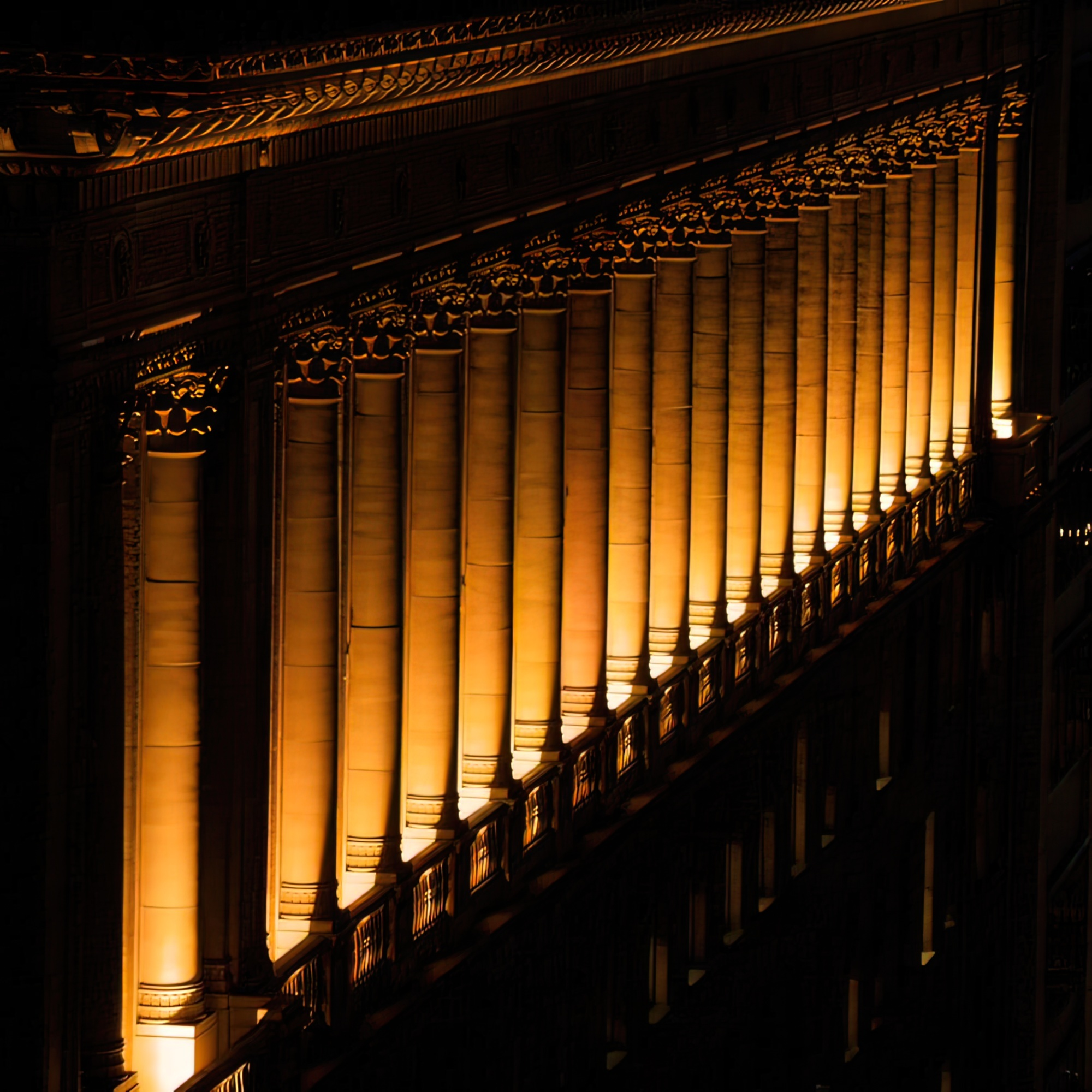
Another great use of graze lighting is the illumination of pillars. These tall vertical structures have several carved smaller spaces that can be enhanced using wall grazing.
Colored LEDs are generally incompatible with graze lighting, as the colors can often overpower the natural texture. Wall grazers are meant to bring out the beauty of the textures, and colors are an unnecessary addition to that process.
Comparison between Wall Washers and Wall Grazers
| Wall Washers | Wall Grazers | |
| Beam Angle | >20° | ~5° |
| Distance from the Wall | >12 in. | <12 in. |
| Fixture Variety | Limited | Diverse |
| Applications | Hiding Surface Imperfections | Highlighting Surface Textures |
| Mounting Flexibility | Limited | Ample |
Which Accent Lighting is the Best: Wall Washing vs. Wall Grazing?
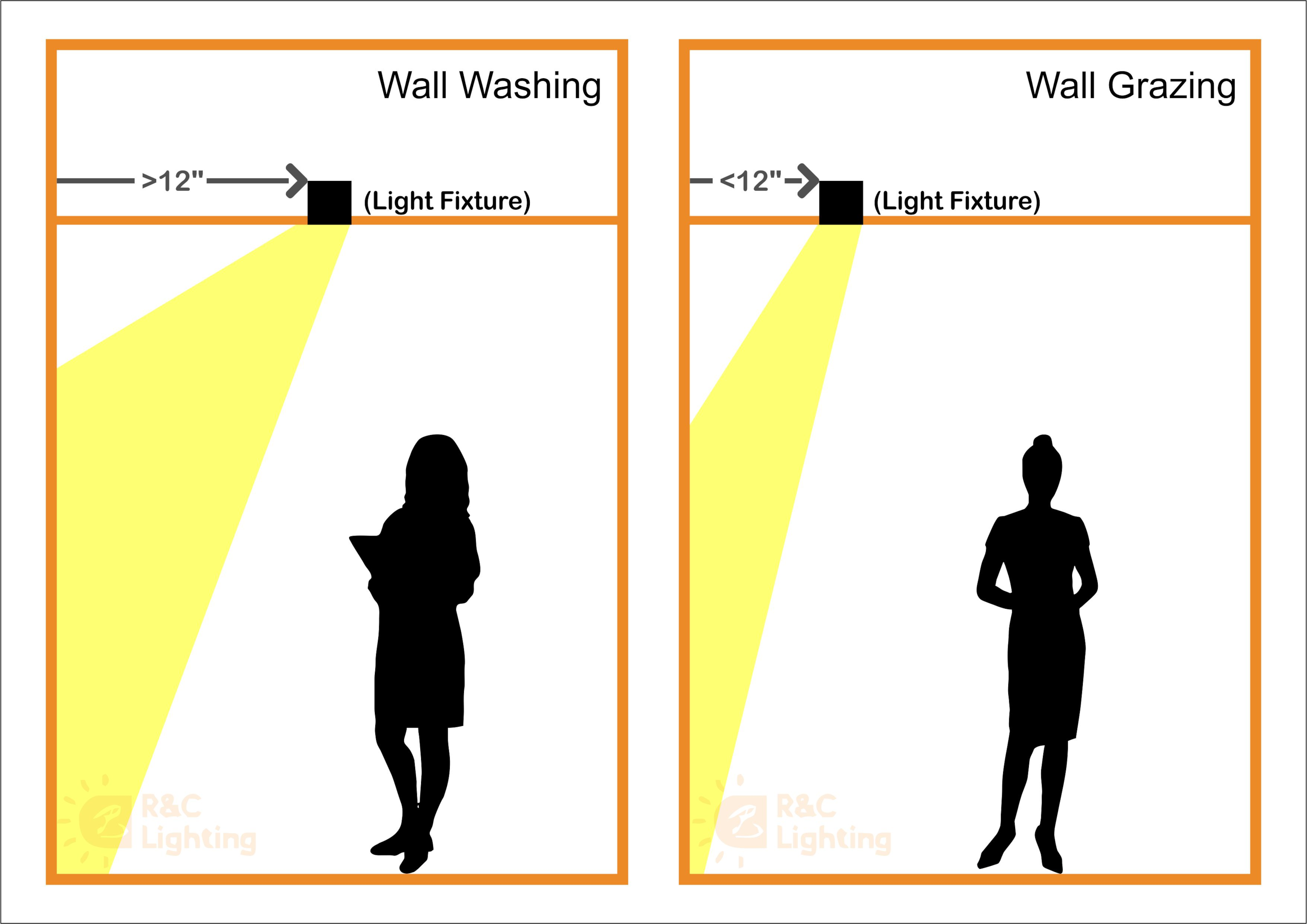
Wall washing and wall grazing are simple lighting approaches that are very close. The choice between the two approaches comes from the application and wall design.
Drywalls have a rough surface texture that is not to everyone’s liking. You can use wash lighting to hide such textures, and the wall will appear to the human eye as a smooth surface. Similarly, if you have had a bad paint job done on your walls, wash lighting will help remove those visual imperfections.
Brick walls have a lovely rustic surface finish, and graze lighting helps enhance that look. If you use a brick facade or some custom wall designs, wall grazing can help bring out those surface details.
So it all comes down to whether you want to enhance or hide those surface elements. Wall Washers hide those elements, and Wall Grazers enhance them.
Why Choose R&C Lighting for Your Wall Lighting Project?
R&C Lighting is an expert in manufacturing and supplying facade lighting solutions. We have a diverse range of Outdoor Wall Lighting fixtures, with our wall washers being a top-rated product.
We also offer free consultations, discounts on large orders, and technical on-site support. Success in any line of work will require you to have good lighting. So, rely on R&C Lighting to help you achieve that success. Contact us Now!








